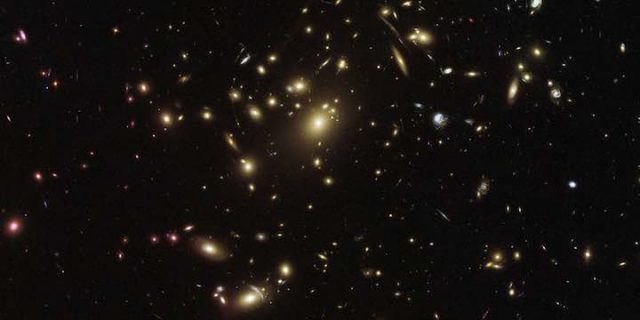Contact with aliens is a popular theme in science fiction stories. Some people even think they have seen, or been contacted by, aliens.
But so far, despite more than 30 years of a scientific Search for Extra-terrestrial Intelligence (SETI), no evidence has been found that there is any intelligent life “out there”.
But some new analysis may point to an answer.
The story so far …..
At first thought, life elsewhere in the universe seems likely. There are believed to be 100 million planets in our galaxy, about a tenth of them of similar size to earth. With an estimated 100-200 billion galaxies in the known universe, that’s an astonishing number of earth-sized planets.
So, it is argued, if even a small fraction of these planets have other characteristics that would support life, it seems likely that life has evolved on many other planets throughout the universe.
And if life has evolved, perhaps intelligent life has evolved in some of those locations too. But can science give us a better answer than this?
Drake equation
Almost 60 years ago, astrophysicist Frank Drake developed the Drake Equation, which tried to estimate the probable number of civilisations in our galaxy that we could possibly contact. The equation summarises the factors thought most important in the evolution of intelligent life.
However the equation proved to be problematic. The possible ranges of some of the parameters was so large that subjective opinion tended to determine the result more than facts did. Too often people got the answer they were looking for.
Rare earth equation
Other scientists have pointed to over 200 specific characteristics that make earth “special”, which may not occur very commonly elsewhere, and may mean that life has evolved far less often that we might imagine.
So almost 20 years ago, Ward & Brownlee developed their own equation that was more sceptical about the evolution of life. They calculated that while microbial life might be common in the universe, intelligent life was extremely rare.
So two different attempts to calculate the probability of intelligent life gave completely different answers.
The Fermi Paradox
Back in 1950, famed physicist Enrico Fermi posed the question, “Where are everybody?” If there were so many solar systems and planets out there, and intelligent life was so likely, why hadn’t we found any? Or any contacted us, if they are further advanced that us?
After all, we have sent men to the moon, sent out spaceships and radio waves galore into deep space, probed the universe for signals – but nothing.
Doesn’t this show that the Drake equation is wrong?
Dissolving the Fermi Paradox?
Just this year, Sandberg, Drexler and Ord from the Future of Humanity Institute at Oxford University, re-analysed the Drake equation, and arrived at a much better-based answer.
As they set out in their June 2018 paper, Dissolving the Fermi Paradox, there are ways to make the Drake equation more statistically and scientifically reliable. They made two significant new steps.
Assessing the variables
Since there is a wide range of estimates for most of the variables in the Drake equation, how to determine the value within the range to plug into the equation is an important question.
Sandberg, Drexler and Ord show that using a point estimate for a variable (e.g. taking an average of several estimates, or using the mid point of the possible range) gives unreliable results that are often over-estimates.
Instead, they used a probability distribution based on the uncertainty of the various estimates for each variable, and used these to calculate a range of probabilities for intelligent life.
Accounting for the Fermi Paradox
Bayesian probability allows a probability estimate to be updated when new information is received. So Sandberg, Drexler and Ord modified the probability estimates they had calculated to account for the fact that no contact had been made with an alien civilisation, not any evidence found for one.
And the ‘winner’ is …. !
This revised Drake equation calculation indicated that another civilisation is very unlikely in our galaxy and not very likely in the entire observable universe.
The calculated probability range for us being alone in the galaxy was 53% to 99.6%, and 39% to 85% for the observable universe.
Does this mean anything?
I can’t think that even this revised calculation is reliable – there are too many factors which we cannot possible know or assess. But it is interesting to allow this latest information to inform our imaginations.
Some sceptics consider the inhospitality of most of the universe to be a reason to reject belief in God, so this result may reinforce that view.
However this result may equally support the view that life is not a natural or normal occurrence, and so strengthen the case that God created.
I don’t think either argument is very strong, although I think the first may be the weaker of the two.
Read more
- A rare earth? on this website.
- Dissolving the Fermi Paradox, by Sandberg, Drexler and Ord.
Photo: Galaxy cluster Abell 2537, courtesy of NASA.




